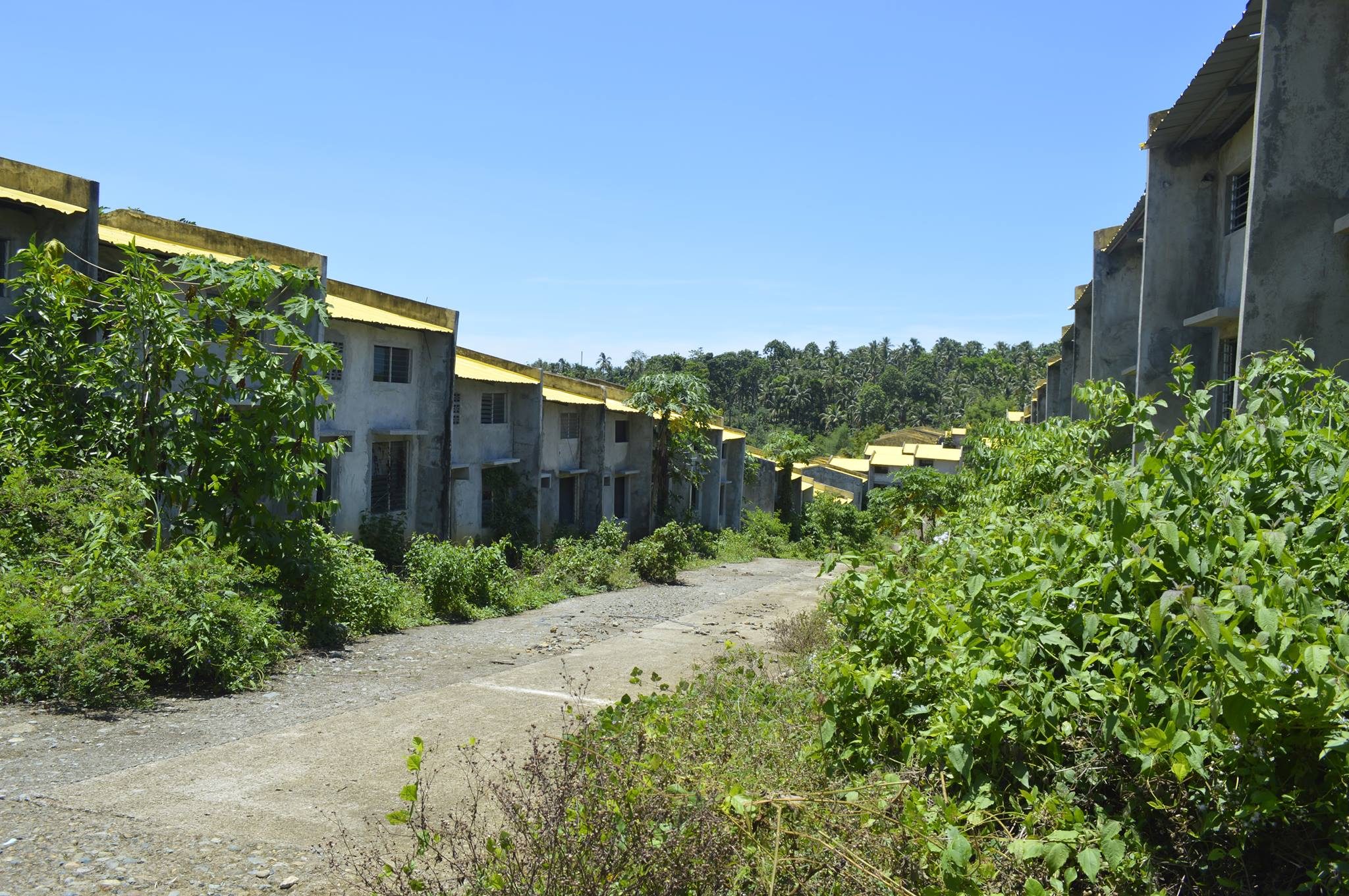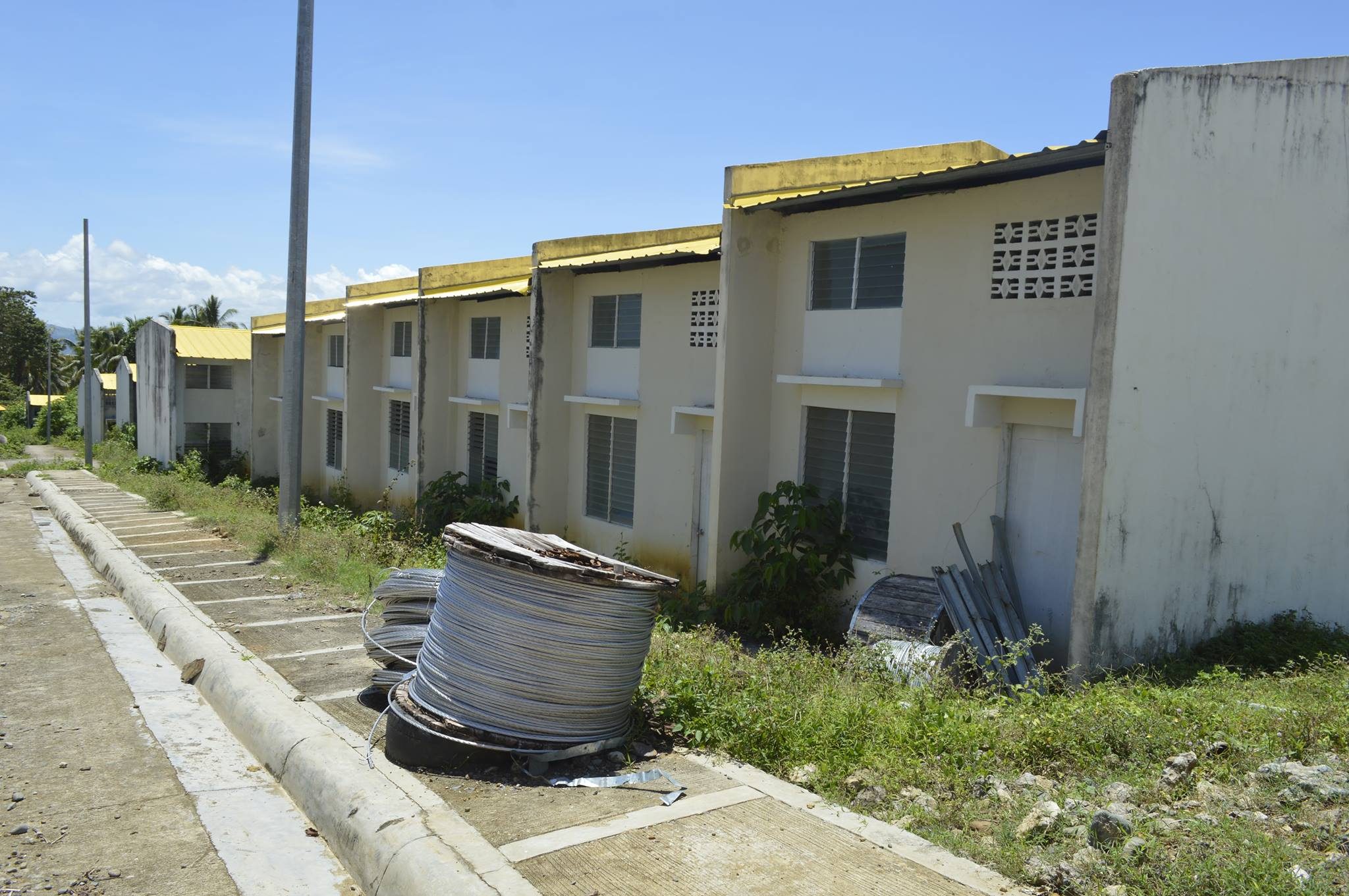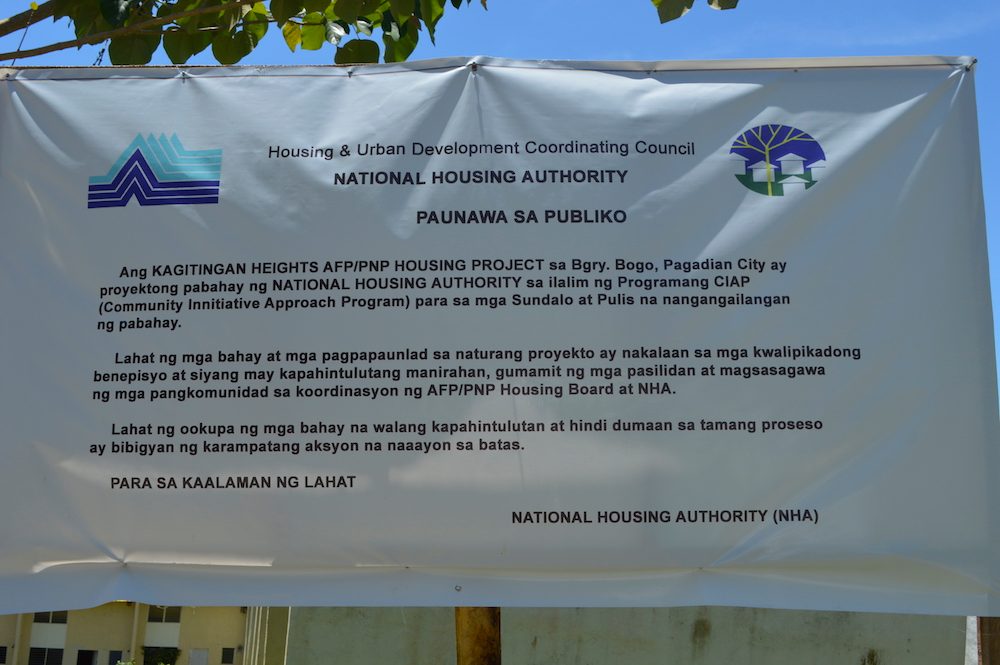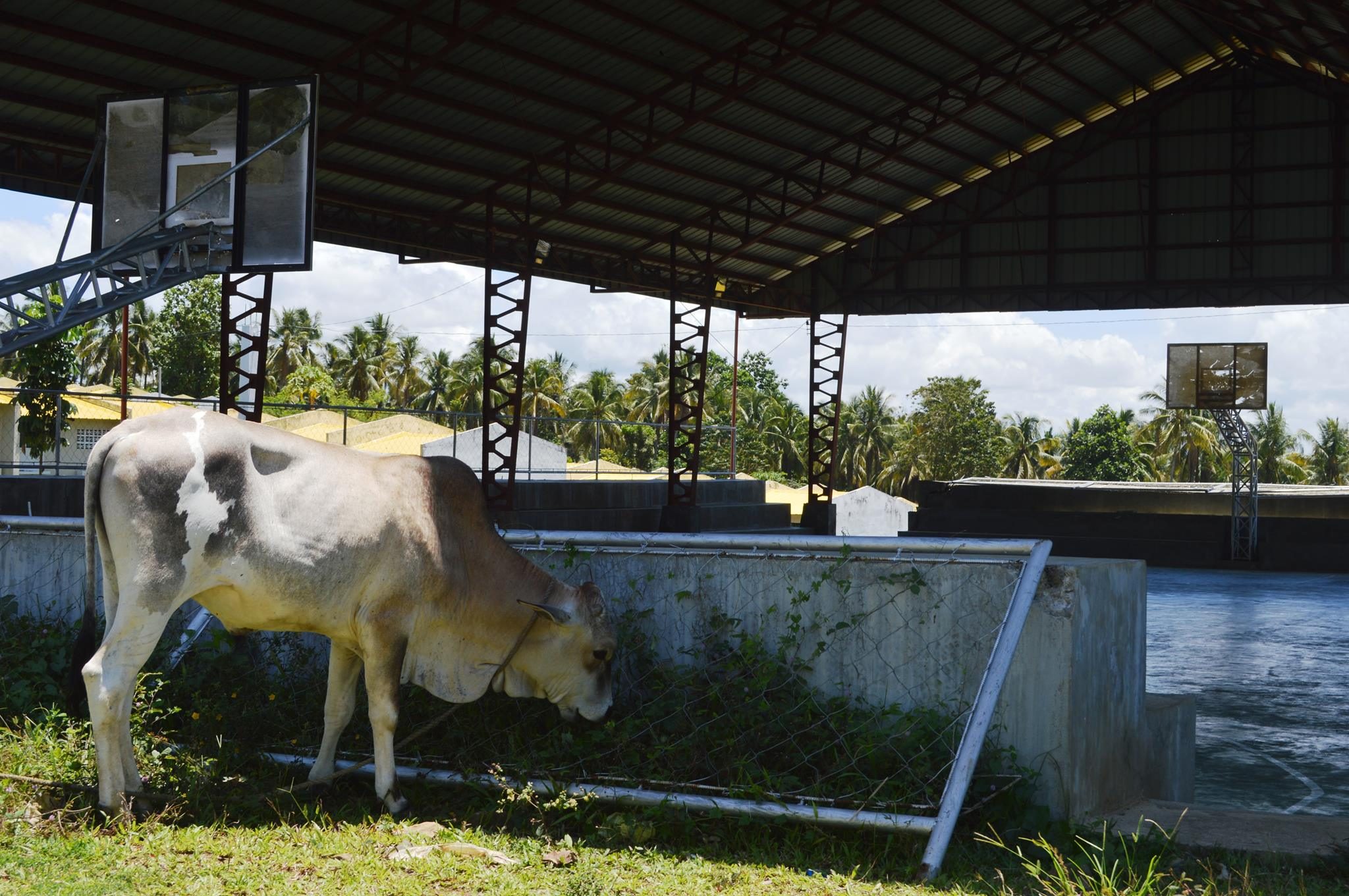SUMMARY
This is AI generated summarization, which may have errors. For context, always refer to the full article.

PAGADIAN CITY, Philippines – The National Housing Authority’s (NHA) 1,350-unit, nearly half-a-billion-peso Kagitingan Heights housing project in Barangay Bogo in this city looks like a ghost town.
Only a few habal-habal (public motorcycles) pass by during the day, and by night the massive cluster of row houses become the favorite illicit short-time haven of lovers and den of drug addicts.
NHA General Manager Marcelino Escalada Jr. told Rappler Wednesday, April 19, that Kagitingan Heights is intended for military, police, firefighters and jail guards though its contractors are yet to turn-over the project to NHA as “retrofitting of some of the housing units are still on-going.”
Kagitingan Heights is one of the housing projects built through then-president Benigno Aquino III’s Administrative Order 9 (AO 9), which directed the NHA to “formulate, implement and manage housing program for the military and police personnel.”
Escalada said the construction of Kagitingan Heights commenced in October 2012 and “physically completed” in May 2014.
But Reynante Caparuso, son-in-law of former owner of the land used for Kagitingan Heights, said he is not aware of an on-going retrofitting works and he have not seen construction workers at the projeft site in the past two years.
Caparuso, who is living adjacent to Kagitingan Heights, recalled that in late 2015, the housing projet’s main contractor – Laurasia Realty Corporation – announced it was to turn-over 300 units, “but it never happened.”
He said that would-be beneficiaries who visited Kagitingan Heights were reluctant about getting houses that they described to be “uncomfortably small,” “the structures are weak,” and “support facilities like water and electricity [are] non-existent.”
Unlivable

Caparuso told Rappler that a lot of visiting police and military personnel told him the housing project was good only in the video presentation by Laurasia.
Nevertheless, Lt. Colonel Jo-ar Herrera, spokesman of the Army’s 1st Infantry “Tabak” Division, said there were soldiers willing to avail of the housing project, but they are yet to receive formal notice of occupancy from the NHA.
But a high-ranking police official in Pagadian who was recently reassigned to Zamboanga del Norte province told Rappler his policemen refused to take the housing units because “it was unfit for living” and “seemed to be substandard.”
“Itutulak mo lang ang dingding, parang babagsak na (you just push the wall and it seems it could collapse),” said the police official, who asked not to be identified. “Wala talagang takers sa amin, pati na yung mga naiwang pamilya ng dalawang napatay na pulis na kasali sa SAF 44 (There really aren’t any takers from us, even the families of two policemen who were part of the SAF 44).”
Caparuso himself is convinced that the housing units at Kagitingan Heights did not conform with the standards of the National Building Code of the Philippines, a view that Escalada denied.
“The (Kagitingan Heights) project conforms with the National Building Code, conventional materials were used,” Escalada said through email.
New scheme

As to the size of the housing units, Escalada explained the Armed Forces of the Philippines (AFP) and Philippine National Police (PNP) Housing Boards will submit to NHA the revised final list of “would-be awardees” based on the new scheme, which increased the lot size from 40 square meters (sqm) to 80 sqm and floor area from 22 sqm to 44 sqm.
This means would-be awardees will have two units, reducing the number of beneficiaries by half.
And despite not being formally turned over yet, a source from NHA said the contractors were already paid. An NHA document, “Aging of Due and Demandable Obligations” dated September 20, 2016, shows that Kagitingan Heights has a total cost of P435,832,424.
The projects were distributed to Laurasia, which acquired the 12-hectare land and constructed the housing units; Prismordial Construction Inc., which constructed the covered court/multi-purpose center and 3-storey, 15-classroom school building; while Kagitingan Heights itself is in-charge of electricity and water distribution system.
Escalada also confirmed that the construction of Kagitingan Heights housing project did not go through the usual bidding because, he said, they adopted the Community Initiative Approach Program as provided in Aquino’s AO 9.
“Whatever that program means. I’m with the government, but I didn’t know that this kind of project would go without the usual bidding provided by law,” the police official quipped. Direct contracting is allowed only when items were covered by patents and copyrights; exclusive dealer or manufacturer; small repeat orders; and in cases of emergencies.
Unlikely

In the meantime, high NHA officials seem to be misinformed with what is actually happening at Kagitingan Heights.
The problems expand much more than just retrofitting of the housing units – a large water tank has been constructed, but no distribution pipes; electric steel posts were erected, but unused rolls of wires were abandoned; and the owner of the land, the Balase family, is yet to receive 25% of the more or less P16.8 million total acquisition cost.
“Grasses are even reaching the lofts of the row houses,” Caparuso said.
He added that Kagitingan Heights is left unguarded and he did not see workers of Laurasia or from NHA visiting the project site for months. It was only when members of the urban poor group Kadamay occupied the housing projects in Bulacan that NHA-Pagadian personnel came to erect a notice against unauthorized takeover of the units.
The new scheme introduced by Escalada is still unlikely to attract the beneficiaries of Kagitingan Heights. Caparuso said it is the alleged weak foundation of the structures is what beneficiaries are afraid the most.
“We have to consider that Pagadian was already hit by massive tsunami caused by magnitude 8 Moro Gulf earthquake on 1976. It could happen again,” Caparuso said. He was referring to the August 17, 1976 disaster when Pagadian was hardest hit by the earthquake, followed by a tsunami, that killed 5,000 people and thousands went missing.
The best but “outrageously expensive” way to attract takers, he said, would be to demolish the existing row houses and build new ones, “and do it right.” – Rappler.com
Add a comment
How does this make you feel?
There are no comments yet. Add your comment to start the conversation.